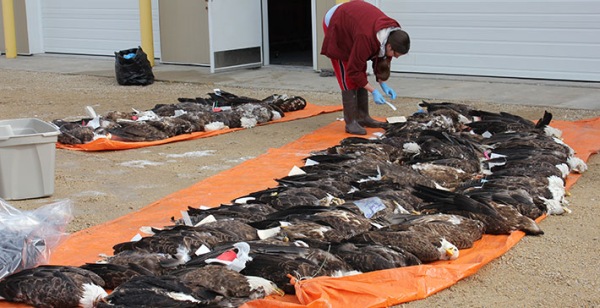
On Throw Back Thursday:
The news from Flint, Michigan about lead in their water supply reminds me that I wrote about lead poisoning in birds back in 2009. Sadly not much has changed.
Though the U.S. has banned lead shot in wetlands, it’s still present in fishing sinkers and the bullets used in deer hunting. Scavenging birds, including bald eagles, eat the gut piles hunters leave behind and are poisoned by the bullet fragments. Many die.
A 2012 bald eagle mortality study in the Upper Mississippi Valley found that 60% of the dead eagles had detectable concentrations of lead in their livers. 38% had lethal levels.

Sadly, the problem is seen too often by veterinarians and wildlife rehabilitators.
Back in January 2009 I wrote about the dangers of lead poisoning and the sick eagle, pictured above, who was treated at Medina Raptor Center, Ohio. Learn more in this 2009 blog post: Lead Poisoning
(photo from Wikimedia Commons. Click on the image to see the original)
p.s. Last year California became the first state to ban lead in bullets. They are phasing them out over a period of five years.
As a fisherman, I can say with almost certainty that no angler would protest if the material of their sinkers was switched out to something that is lead-free. As long as it performs equally, folks would use them without complaint.
The big thing would be the time it takes to completely phase out their existing lead weight inventory in their tackle boxes; that could take many, many years which means there would continue to be a leaded presence in the wild.
Perhaps the bait manufacturers or retailers would be well-advised to create a trade-in marketing campaign, with collection bins in stores for the leaded tackle much like you see in the fishing departments at the big retailers for old or used fishing line. That could at least accelerate the switching out process slightly and, as we’d all agree, every little bit can help make a difference.
-C.
Great idea, Chris. I hope it catches on.